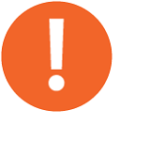This information explains how to take your medications safely after you’re discharged (go home) from the hospital.
It can be dangerous to miss doses or take extra doses of your medications. Always take your medications the right way, at the right time, and at the right doses.
What to do before you’re discharged
For each of your medications, try to learn:
- The name of each medication.
- Why you’re taking it.
- How often you need to take it.
- The pill or tablet strength.
- How many of each pill or tablet you need to take to get the right dose.
Make sure you:
- Understand your Home Medication List.
- Know how to fill a pill box if you plan to use one.
- Know how to read the labels on your medication bottles.
It’s helpful if your caregiver learns with you so they can help you, if needed. They can do this even if you feel confident managing your medications on your own.
If you have questions or concerns about your medications, ask your nurse or pharmacist before you leave the hospital. If you don’t want to use a pill box, talk with your nurse and pharmacist. Agree on a plan for how you will manage your medications.
What to do after you’re discharged

|
|
Bring your Home Medication List to all your visits. Make sure you get an updated list at every visit. One of your healthcare providers should give you one. Throw away your old Home Medication Lists so they don’t get mixed up with your current list.
Your healthcare provider may change your medication dose or schedule between visits. If they do, write the change on your Home Medication List.
Take your medications
The instructions on your Home Medication List may be different than the instructions on the bottles. This can happen if your healthcare provider changes your medication dose or schedule more often than you refill your medications.
Always follow the instructions on your Home Medication List, not the instructions on the medication bottles. Your Home Medication List has the most up-to-date information about your medications.
Some of your medications may make you feel nauseous (like you’re going to throw up). Sometimes, just thinking about taking your medications can make you feel nauseous. Follow these tips to help prevent nausea:
- Take an anti-nausea medication 30 minutes before taking your other medications.
- Some medications are safe to take with food. Have a meal or snack just before or when you take these medications.
- You may need to take some of your medications when your stomach is empty. Do not eat before or when you take these medications. Follow the instructions on your Home Medication List or from your healthcare provider. Do not take your other medications on an empty stomach, especially first thing in the morning.
- Do not try to swallow all of your pills at the same time, especially first thing in the morning.
Order medication refills
Do not let your medications run out. Keep track of when you need medication refills. Ask for a refill 5 or more days before the medication runs out. Sometimes, it takes a day or two for the medication to be ready.
Once you use all the refills, you will need a new prescription. Ask your healthcare provider to write a new prescription to get more of the medication.
Try not to use too many different pharmacies to fill your medications. Sometimes, different pharmacies use different brands of the same medication. Even though the medication is the same, the pills might look different. This can be confusing.
Store your medications
Store standing medications separate from PRN medications, if you have them. Standing medications are medications you take on a schedule. PRN medications are medications you take only when you need them, such as anti-nausea or pain medication. For example, keep standing medication bottles in a labeled bag, separate from PRN medications.
Fill your pill box
If you plan to use a bill box, read How To Fill a Pill Box for information.
When to call your healthcare provider
Call your doctor, nurse, or pharmacist if you:
- Need a medication refill. Remember to call 5 or more days before you run out.
- Have trouble with your medications.
- Have questions about your medications.
